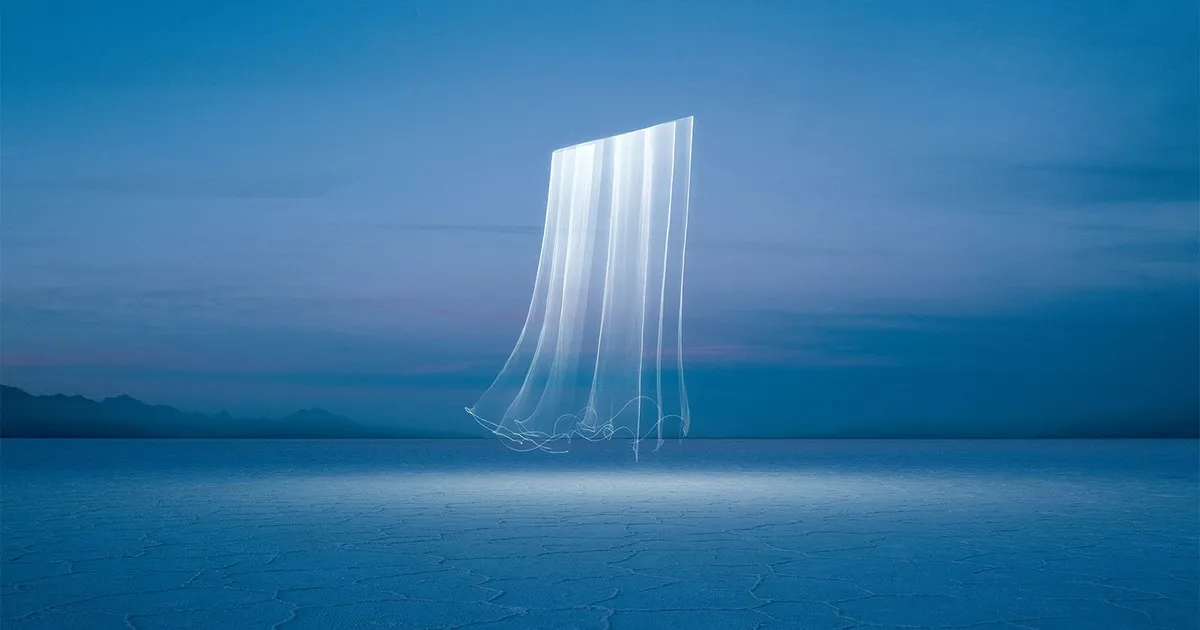
Renowned photographer Reuben Wu has unveiled an extraordinary new project titled Thin Places, showcasing his incredible skills with the state-of-the-art Fujifilm GFX100RF. This advanced 102-megapixel fixed-lens medium-format camera has enabled Wu to capture stunning, ethereal night landscapes, illuminated by innovative drone-mounted lights and lasers. Wu first introduced these specialized lasers in his acclaimed Siren series last year, marking a significant evolution in his photographic techniques.
In Thin Places, Wu employs a dual approach to lighting, combining both traditional drone-mounted lights and his new, fluid laser techniques. This blend allows each piece to tell a unique story. "There are places in the world where the gap between the seen and unseen feels thinner, where presence shifts in ways that reveal something just beyond reach," Wu shared on Instagram. "Thin Places is about those moments; brief encounters with the beyond," he adds, emphasizing the profound atmosphere he seeks to capture.
For Wu, capturing a location's essence is paramount, making composition and lighting essential elements of his work. He found the GFX100RF’s fixed lens—a 35mm f/4 (28mm equivalent)—to be creatively liberating, rather than limiting. "Having only one lens choice removes the decision-making processes that usually accompany interchangeable lenses," Wu explained to PetaPixel. This streamlined approach allows him to engage more directly with the scene, enhancing his creative process.
The Fujifilm GFX100RF boasts a remarkable 102-megapixel image sensor, enabling Wu to utilize its built-in digital teleconverters and various aspect ratios with ease. With a 44 by 33-millimeter sensor, the camera captures stunning 102-megapixel 4:3 photos by default. Photographers can also crop to a 35mm lens (62 megapixels), a 50mm lens (31 megapixels), or a 63mm focal length (20 megapixels), all controlled via a convenient rocker switch on the camera.
A new dedicated aspect ratio dial allows for seamless switching between various formats, including 3:2, 5:4, 65:42, 17:6, and 1:1, with megapixel counts ranging from 48 to 95. Wu primarily utilized the standard 4:3 aspect ratio for his striking “hero” shots while opting for more cinematic ratios in certain project story photos.
One of the standout advantages of the GFX100RF is its compact and lightweight design, making it Fujifilm’s lightest GFX camera to date. Despite its impressive 102-megapixel sensor, the camera is easy to handle. "It felt liberating to carry around such a compact camera while knowing that it had the same resolution as what I usually use for these types of images," Wu noted. The reduced weight and size allowed for greater mobility in the field, essential for longer hikes and more spontaneous shooting opportunities.
Wu's familiarity with the Fujifilm GFX100II over recent months has deepened his appreciation for the sensor’s capabilities, including resolution, color rendering, and dynamic range. "It’s about enabling this technology in a much smaller form factor that excites me," he remarked. The 102-megapixel sensor provides exceptional flexibility in post-production, whether for large-scale prints or significant cropping while retaining detail. The dynamic range is particularly advantageous for nighttime photography, allowing Wu to capture both deep shadows and bright highlights in a single frame.
In conclusion, Wu expresses his renewed enthusiasm for a walk-around camera, stating, "I’ve never really enjoyed having a walk-around camera since the Fujifilm X-Pro1, and I think I might start again with this." With the Fujifilm GFX100RF and his innovative project Thin Places, Reuben Wu continues to push the boundaries of contemporary photography, inviting viewers to explore the unseen worlds that lie just beyond our perception.